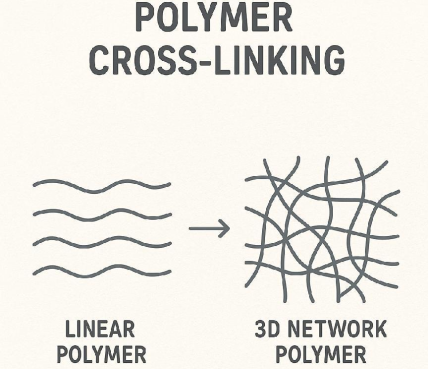Research on the Current Status and Development Trends of UV Inkjet Technology(PART II)
Release time:
2025-07-20
Part Three: Challenges and Future Development Trends of UV Inkjet Technology
Despite the rapid development and immense potential of UV inkjet technology, it still faces a series of challenges in its promotion and application, as well as in technological deepening. At the same time, continuous R&D investment and market demand also point to clear future development directions.
1. Current Main Challenges
Ink Cost and Raw Material Price Fluctuations: The price of high-performance UV inks is relatively high, and the cost and market price fluctuations of key raw materials such as photoinitiators and specific high-performance monomers directly affect ink manufacturers' cost control and final product pricing.
Curing Uniformity and Deep Curing Issues: For thicker ink layers, dark inks, or ink systems with high UV light absorption, UV light may struggle to penetrate to the bottom of the ink layer, leading to good surface curing but insufficient internal curing, affecting ink film adhesion, durability, and overall performance.
Substrate Compatibility and Adhesion to Special Substrates: Achieving durable and strong adhesion, good scratch resistance, and chemical resistance remains challenging on certain extremely low surface energy plastics, highly smooth metals or glass surfaces, and some specially chemically treated materials.
Ink Stability and Shelf Life: UV inks are photosensitive and thermosensitive systems, requiring storage in dark, low-temperature conditions to prevent premature polymerization and deterioration. If pigment particles are poorly dispersed, long-term storage may lead to settling or flocculation, affecting ink flow and printhead clogging.
Equipment Investment and Technical Integration Threshold: The initial purchase cost of high-performance industrial-grade UV inkjet printing equipment is relatively high, and operation, maintenance, and troubleshooting require specialized technical personnel.
Overcoming Oxygen Inhibition Effect: Atmospheric oxygen has a significant inhibitory effect on free radical polymerization reactions, especially affecting the curing speed and effectiveness of the ink surface.
Continuous Improvement of Environmental and Safety Standards: Regulatory restrictions on harmful substances in printed materials and inks are becoming increasingly strict, prompting ink manufacturers to continuously research and develop safer, more environmentally friendly raw materials and formulations, such as developing low-migration inks for food packaging.
2. Future Development Trends and Technological Outlook
UV inkjet technology is continuously evolving towards greater efficiency, environmental friendliness, intelligence, and wider application:
New Materials and Formulation Innovation:
Low Migration UV Inks: Developed specifically for sensitive applications such as food packaging, pharmaceutical packaging, and toys, ensuring that ink components do not migrate into the contents.
Water-based UV Inks: Combining the environmental benefits of water-based inks (lower VOC, low odor) with the rapidness of UV curing, this is an important future development direction, but challenges such as viscosity control, drying, and curing efficiency need to be addressed.
Application of Novel Monomers/Oligomers: Development and application of bio-based, low skin irritation, lower odor, higher flexibility, stronger weather resistance, and special functional (e.g., self-healing) novel monomers and oligomers to enhance overall performance and reduce environmental footprint.
Integration of Nanomaterials: Incorporating nanoparticles into UV ink formulations to give printed products special functions such as conductivity, antimicrobial properties, photocatalysis, and enhanced wear resistance.
Advanced Curing Technologies:
Deepening of LED-UV Curing Technology: LED-UV light sources will continue to develop towards higher optical power density, more wavelength options, optimized heat dissipation designs, and lower energy consumption, further replacing traditional mercury lamps.
Exploration of Alternative Curing Technologies: Such as Electron Beam (EB) curing technology, which has strong penetration capabilities, can achieve rapid deep curing of thick coatings and opaque materials, and is essentially unaffected by oxygen inhibition, serving as a powerful supplement and potential alternative to UV curing technology.
Intelligence, Automation, and High Speed:
Innovation in Printhead Technology: Printheads with higher firing frequency, smaller droplet volume, higher nozzle density, and longer lifespan will continue to be introduced to achieve higher printing speeds and image quality.
System Integration and Automation: UV inkjet equipment will be increasingly integrated with robotic loading/unloading systems, online inspection systems, MES (Manufacturing Execution Systems), etc., to build fully automated digital printing production lines.
Intelligent Control and Optimization: Introduction of Artificial Intelligence (AI) and machine learning algorithms for real-time monitoring and automatic correction of print quality, intelligent color management, predictive maintenance of printhead status, etc.
Expansion into Emerging Application Fields:
Additive Manufacturing (3D Printing): UV curing technology is at the core of photosensitive resin 3D printing, and UV inkjet technology is also used for multi-material, full-color 3D printing.
Printed Electronics: Utilizing conductive, dielectric, semiconductor, and other functional UV inkjet inks to directly print flexible circuits, sensors, RFID tags, display components, etc.
Biomedical: Exploration of applications in customized medical implants, tissue engineering scaffolds, microfluidic chips, and surface functionalization coatings for medical devices.
High-End Textile Printing and Dyeing: UV inkjet is used for direct digital printing on textiles, offering advantages such as a shorter process flow and water saving.
Deepening Sustainability and Circular Economy: Developing UV inks that are easily peeled off or depolymerized from substrates to promote recycling, optimizing production processes to reduce ink waste and energy consumption, and promoting the use of more renewable and bio-based raw materials.
Continued Market Growth and Evolving Competitive Landscape: The global and Chinese UV inkjet printer and ink market is expected to continue to grow.
Part Four: Recommended UV Inkjet Monomers and Property Analysis
Reactive diluents, i.e., monomers, are indispensable core components in UV inkjet inks. They not only regulate ink viscosity but also deeply participate in the photocuring process, directly affecting various properties of the final cured ink film.
1. Core Functions of Monomers in UV Inkjet Inks
Viscosity Regulation: Adjusting the viscosity of high-viscosity oligomer systems to the range required by inkjet printheads (typically 5-25 cP at 25°C).
Participation in Curing Reaction: The polymerizable functional groups in monomer molecules participate in chain polymerization and cross-linking reactions, becoming part of the cured ink film's network structure.
Influence on Ink Film Performance: The type, functionality (monofunctional, difunctional, multifunctional), and chemical structure of monomers significantly affect the physicochemical properties of the cured ink film, such as hardness, flexibility, adhesion, scratch resistance, chemical resistance, weather resistance, glass transition temperature (Tg), and curing shrinkage.
2. Basic Principles for Monomer Selection
Selecting suitable monomers requires comprehensive consideration of: viscosity adjustment capability, reactivity, adhesion to the substrate, properties imparted to the ink film, curing shrinkage, odor and skin irritation (prioritizing low-odor, low-volatility, low-skin-irritation monomers), compatibility and stability, and cost-effectiveness.
3. Commonly Used Monofunctional Acrylate Monomers and Their Characteristics
Monofunctional monomers are important diluents and performance modifiers:
Isobornyl Acrylate (Easmer IBOA): High Tg, imparts high hardness, excellent scratch resistance, good weather resistance, and chemical resistance to the ink film.
2-Phenoxyethyl Acrylate (Easmer PHEA): Good reactivity, low shrinkage, good adhesion to various plastic substrates.
Lauryl Acrylate (Easmer LA): Low viscosity, low Tg, improves ink film flexibility.
Tetrahydrofurfuryl Acrylate (Easmer THFA): Good diluent, relatively good adhesion to certain plastics.
2-(2-Ethoxyethoxy) Ethyl Acrylate (Easmer EOEOEA): Low viscosity, provides good flexibility, relatively low skin irritation.
Dicyclopentenyl Acrylate (Easmer DCPA): Low viscosity, higher Tg, excellent adhesion to difficult-to-bond substrates (PC, PMMA, ABS), helps reduce curing shrinkage.
4. Commonly Used Multifunctional Acrylate Monomers and Their Characteristics
Multifunctional monomers have high reactivity and cross-linking capabilities:
1,6-Hexanediol Diacrylate (Easmer HDDA): Strong dilution ability, high reactivity, fast curing speed.
Dipropylene Glycol Diacrylate (Easmer DPGDA): Better flexibility than HDDA, good curing speed and reactivity.
Tripropylene Glycol Diacrylate (Easmer TPGDA): Good flexibility, relatively low odor and skin irritation, good dilution ability.
Neopentyl Glycol Diacrylate (NPGDA) and its Modified Derivatives (Easmer 2PO-NPGDA): Good pigment wetting and flowability, low surface tension, provides a good balance of hardness and flexibility to the ink film.
Trimethylolpropane Triacrylate (Easmer TMPTA): Very high reactivity, high cross-linking density, imparts high hardness, excellent abrasion resistance, and chemical resistance to the ink film.
Ethoxylated/Propoxylated TMPTA (Easmer EO-TMPTA): Improves TMPTA's flexibility by introducing flexible chain segments, reduces viscosity and skin irritation, while maintaining good reactivity.
Amine-modified Polyether Acrylates: Contain tertiary amine groups, can act as co-initiators, effectively scavenge oxygen free radicals, overcome the oxygen inhibition effect, and significantly improve the surface curing speed and thoroughness of the ink.
5. Selection Recommendations and Application Examples
In practical formulations, a clever combination of various monofunctional and multifunctional monomers is typically used to achieve the optimal balance of comprehensive properties such as viscosity, curing speed, ink film hardness, flexibility, and adhesion.
Flexible Substrate Applications: Prioritize monomers that impart good flexibility to the ink film, such as PHEA, TPGDA, EOEOEA.
Rigid Substrates and Abrasion Resistance Requirements: Select monomers that increase ink film hardness and cross-linking density, such as IBOA, TMPTA and its modified derivatives, and DCPA.
Extremely Low Viscosity Requirements: HDDA, IBOA, PHEA, DCPA are effective low-viscosity diluents.
Low Irritation/Low Odor Needs: Prioritize low-odor, low-skin-irritation monomers, such as EOEOEA, ethoxylated/propoxylated modified multifunctional monomers, and low-irritation DCPA.
Improving Adhesion to Special Substrates: Experiment with PHEA, DCPA, or add specialized functional adhesion promoter monomers or additives.
The specific selection and dosage of monomers need to be comprehensively evaluated and experimentally verified based on actual application scenarios, inkjet printhead models, properties of other components in the ink formulation, regulatory compliance, and cost budget.
Conclusion
UV inkjet technology, as a revolutionary digital printing solution, has demonstrated its core value and immense potential across numerous industries, thanks to its instant curing, wide material adaptability, excellent print quality, significant environmental advantages, and efficient production capabilities. It has not only successfully addressed the limitations of traditional printing in short-run, personalized, and on-demand production but also brought unprecedented flexibility and innovation space to product design and manufacturing processes.
Although UV inkjet technology still faces challenges in ink cost, curing depth and uniformity, adhesion to special substrates, and equipment investment, these challenges also concurrently foster continuous R&D motivation and broad market opportunities. In the future, innovation in materials science, particularly the continuous optimization of oligomer, monomer, and photoinitiator systems in ink chemistry, will be the fundamental driving force for enhancing UV inkjet technology performance and expanding its applications. Combined with advanced curing technologies, intelligent printing control systems, and deep integration with specific industry needs, UV inkjet technology will undoubtedly play an increasingly important role in achieving more efficient, environmentally friendly, and intelligent manufacturing goals, and continuously contribute to the transformation and upgrading and sustainable development of global related industries.
UV INKJET
Previous Page
Previous Page
Latest News
Get a Free Consultancy
NANTONG EASTO MATERIALS TECHNOLOGY CO.,LTD.

No.118,Zhujiang Rd.,Juegang St.,Rudong County,
Nantong City,Jiangsu Province,226400,China




 2025-07-20
2025-07-20






